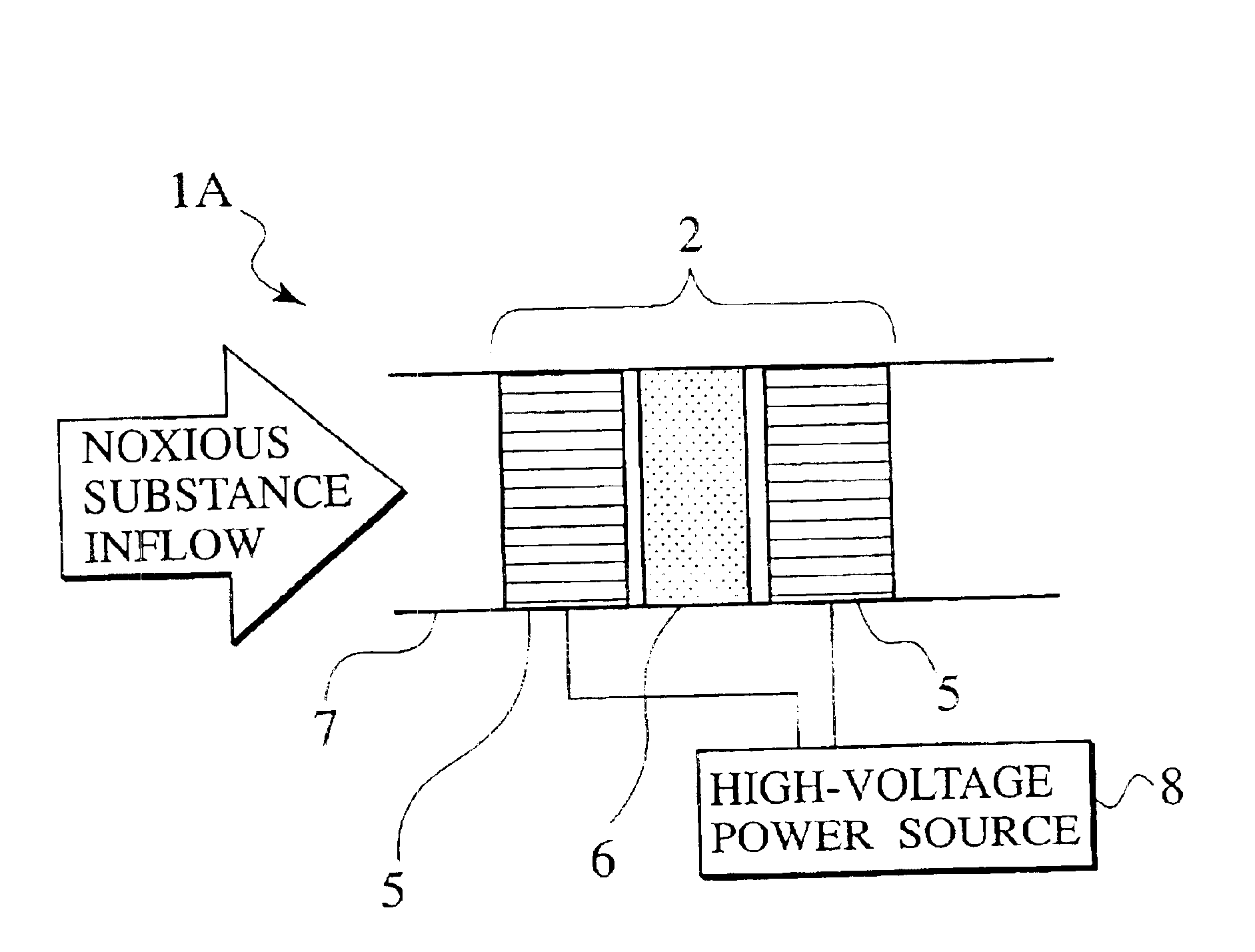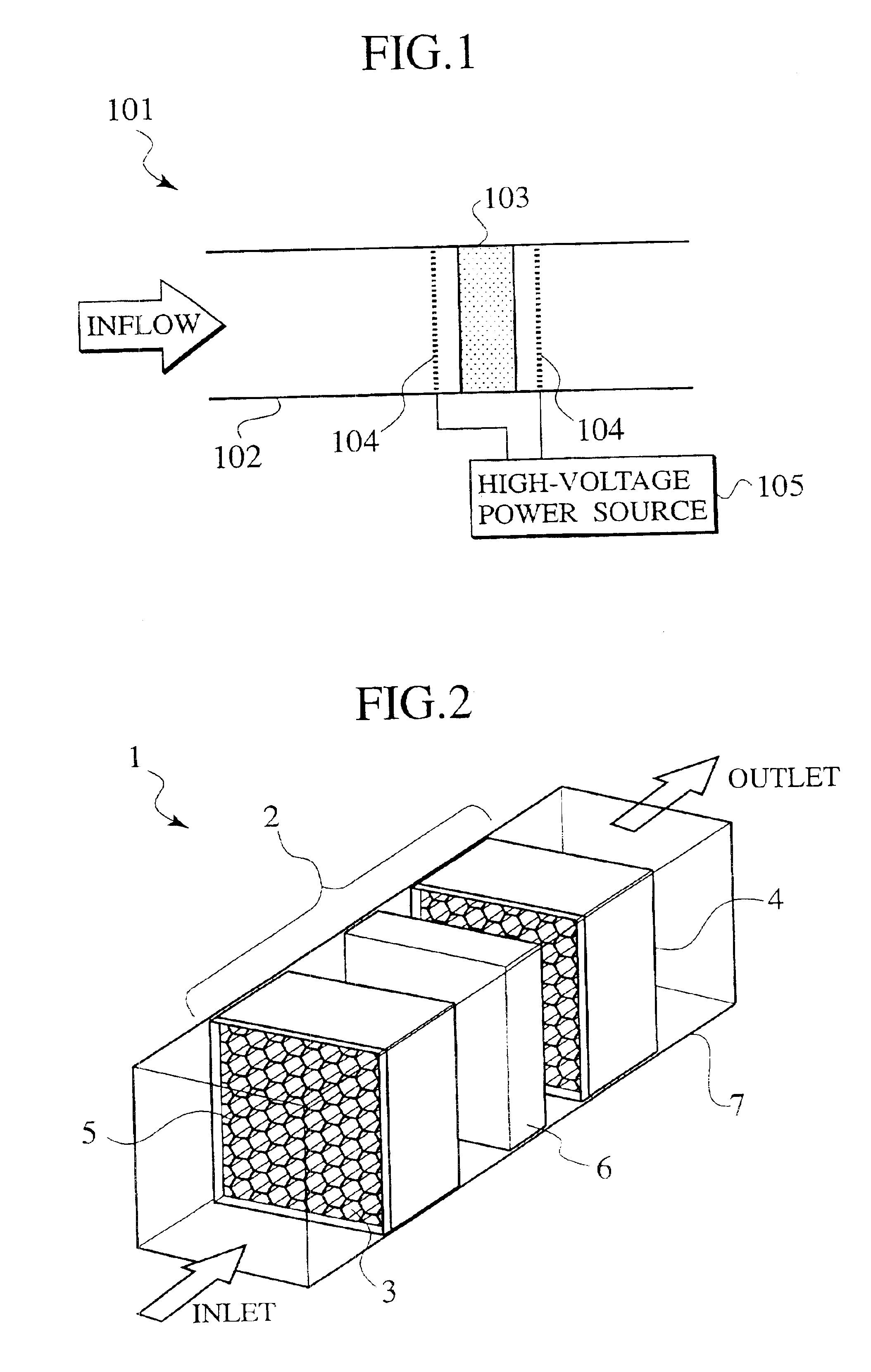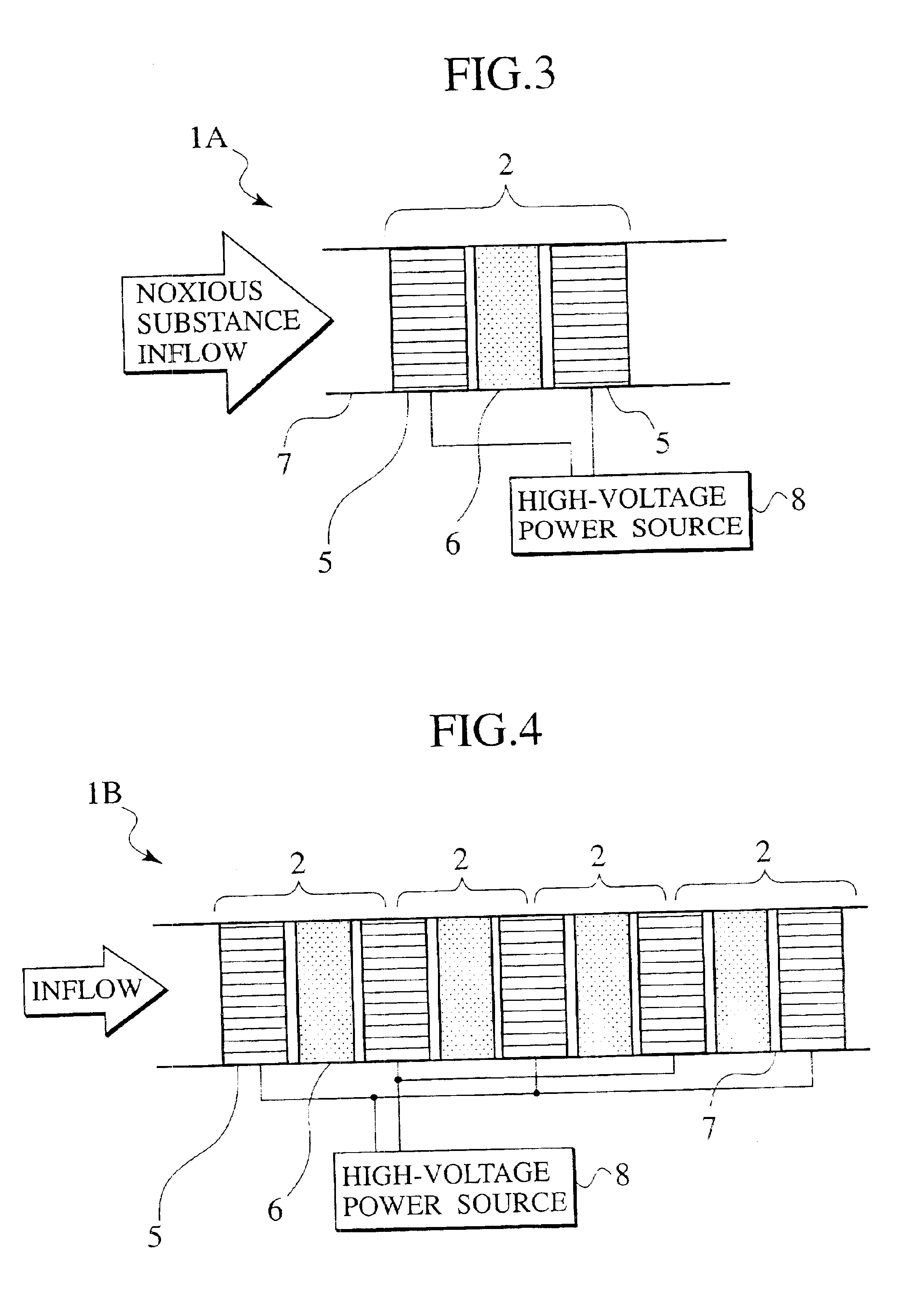Discharge electrode and photocatalysis apparatus
a discharge electrode and photocatalysis technology, applied in the direction of physical/chemical process catalysts, disinfection, separation processes, etc., can solve the problems of closed spaces, environmental pollution, and related art, and achieve the effect of effective and stably discharge, efficiently and stably removing hazardous substances
- Summary
- Abstract
- Description
- Claims
- Application Information
AI Technical Summary
Benefits of technology
Problems solved by technology
Method used
Image
Examples
first embodiment
(First Embodiment)
FIGS. 2 and 3 show a photocatalysis apparatus according to the first embodiment of the present invention.
In FIG. 2, the photocatalysis apparatus 1 (1A in FIG. 3) has a unit structure 2 and a casing 7 housing the unit structure 2. The casing 7 is in a pipe shape and has an inlet and an outlet to pass gas containing hazardous substances therethrough. The unit structure 2 includes a pair of honeycomb electrodes 5 and a photocatalyst module 6 sandwiched between the electrodes 5. The electrodes 5 are connected to a high-voltage power source 8 (FIG. 3).
Each electrode 5 is made of an electrode body 3 and a conductive frame 4. The electrode body 3 is a three-dimensional structure formed from cells made of a conductive foil. The electrode body 3 has front, back, and side faces in which the front and back faces are separated from each other by a predetermined distance and have a honeycomb shape, to pass gas containing hazardous substances through the electrode body 3. The si...
second embodiment
(Second Embodiment)
FIG. 4 shows a photocatalysis apparatus 1B according to the second embodiment of the present invention. The second embodiment employs a plurality of unit structures each being the unit structure 2 of FIGS. 2 and 3.
The photocatalysis apparatus 1B has a plurality of (four in this example) unit structures 2, a casing 7 accommodating the unit structures 2, and a high-voltage power source 8. Each unit structure 2 has a pair of honeycomb electrodes 5 and a photocatalyst module 6 sandwiched between the electrodes 5. The electrodes 5 are connected to the power source 8.
Two adjacent unit structures 2 share one electrode 5 so that each electrode 5 may efficiently emit light toward the unit structures 2.
The configuration, material, etc., of the electrode 5, photocatalyst module 6, semiconductor catalytic particles of the module 6, and power source 8 are basically the same as those of the first embodiment, and therefore, are not explained again.
Operation of the photocatalysis...
third embodiment
(Third Embodiment)
FIG. 5 shows a photocatalysis apparatus 1C according to the third embodiment of the present invention. The third embodiment is a combination of the photocatalysis apparatus of the first embodiment and an ozonolysis catalyst 9.
The photocatalysis apparatus 1C has a unit structure 2, the ozonolysis catalyst 9, a casing 7 housing the unit structure 2 and ozonolysis catalyst 9, and a high-voltage power source 8.
The unit structure 2 includes a pair of honeycomb electrodes 5 and a photocatalyst module 6 sandwiched between the electrodes 5. The electrodes 5 are connected to the power source 8. The ozonolysis catalyst 9 is arranged downstream from the unit structure 2 in a gas flowing direction.
The configuration, material, etc., of the electrode 5, photocatalyst module 6, semiconductor catalytic particles of the module 6, and power source 8 are basically the same as those of the first embodiment, and therefore, are not explained again.
According to the first and second embod...
PUM
| Property | Measurement | Unit |
|---|---|---|
| thickness | aaaaa | aaaaa |
| thickness | aaaaa | aaaaa |
| frequency | aaaaa | aaaaa |
Abstract
Description
Claims
Application Information
 Login to View More
Login to View More - R&D
- Intellectual Property
- Life Sciences
- Materials
- Tech Scout
- Unparalleled Data Quality
- Higher Quality Content
- 60% Fewer Hallucinations
Browse by: Latest US Patents, China's latest patents, Technical Efficacy Thesaurus, Application Domain, Technology Topic, Popular Technical Reports.
© 2025 PatSnap. All rights reserved.Legal|Privacy policy|Modern Slavery Act Transparency Statement|Sitemap|About US| Contact US: help@patsnap.com



